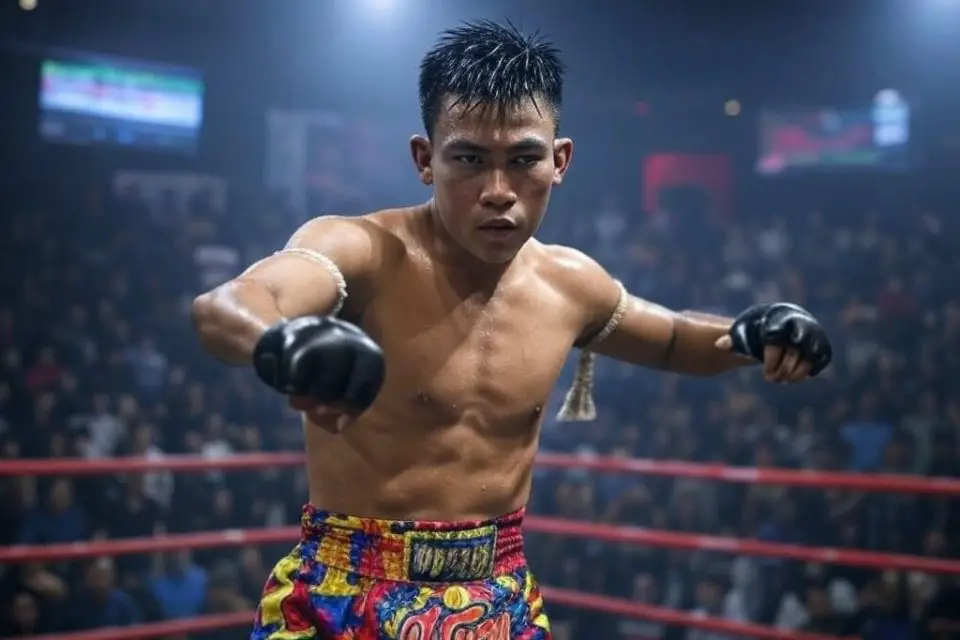Martial arts have long been a significant part of Southeast Asian culture, with Kun Khmer originating from Cambodia and Muay Thai from Thailand. Both martial arts have deep historical roots and cultural importance in their respective countries.

This article aims to compare and contrast Kun Khmer and Muay Thai, exploring their similarities and key differences. Keywords such as Kun Khmer, Muay Thai, Bokator, and Angkor Wat will be discussed to provide a comprehensive understanding of these martial arts.
Kun Khmer
Origins and History
Kun Khmer, also known as Pradal Serey, has its historical roots in ancient Khmer warriors and is believed to have been practiced during the Angkor Wat era. This martial art has evolved over centuries, adapting to various influences while maintaining its core techniques and traditions.
Key Characteristics
Kun Khmer is characterized by its emphasis on kicks, punches, elbows, knees, and clinching. Unique techniques include the use of powerful elbow strikes and knee attacks. Spirituality and tradition play a significant role in Kun Khmer, with fighters often participating in rituals and ceremonies to honor their heritage.
Modern Kun Khmer
In recent years, there has been a resurgence of interest in Kun Khmer, with professional competitions gaining popularity. Notable fighters have emerged, earning titles such as “best Kun Khmer fighter” and “Kun Khmer champion.” The potential for Kun Khmer to achieve international recognition is growing as more people become aware of its rich history and effectiveness as a combat sport.
Muay Thai
Origins and History
Muay Thai, also known as “The Art of Eight Limbs,” has its origins in the military training of ancient Thai warriors. Over time, it evolved into a popular sport and cultural practice in Thailand. Muay Thai has a long history of being used for self-defense and in warfare, eventually becoming a regulated sport with established rules and competitions.
Key Characteristics
Muay Thai is known for its use of eight limbs: kicks, punches, elbows, and knees. The traditional dance “wai kru” and the pre-fight ritual “ram muay” are integral parts of Muay Thai, reflecting its deep cultural significance. The sport emphasizes physical conditioning, mental discipline, and respect for opponents.
Modern Muay Thai
Muay Thai has gained global popularity, with professional leagues and competitions held worldwide. Famous fighters have made significant impacts on the sport, bringing attention to its techniques and traditions. The sport’s international reach continues to grow, attracting practitioners and fans from diverse backgrounds.
Comparing Kun Khmer and Muay Thai
Similarities
Both Kun Khmer and Muay Thai share several elements, including an emphasis on striking techniques (kicks, punches, elbows, knees) and the use of clinching and grappling. Both martial arts focus on physical conditioning and mental discipline. There are potential historical and cultural influences between the two arts, given their geographical proximity and shared history.
Differences
Fighting Style: While both arts use similar techniques, Kun Khmer places a greater emphasis on elbow strikes and knee attacks, whereas Muay Thai is known for its powerful kicks and clinching techniques. Each art has unique aspects that distinguish it from the other.
Cultural Context: Kun Khmer is deeply rooted in Cambodian culture and often involves spiritual rituals. Muay Thai, on the other hand, is a national sport in Thailand with significant cultural and social importance, including traditional dances and ceremonies.
Competition and Popularity: Muay Thai has achieved a higher level of professionalization and global reach compared to Kun Khmer. Muay Thai competitions are widely recognized and attract international participants, while Kun Khmer is still gaining recognition outside Cambodia.
Conclusion
Kun Khmer and Muay Thai are both valuable martial arts with rich histories and cultural significance. While they share similarities in techniques and training, they also have distinct differences in their fighting styles and cultural contexts. The future of both martial arts looks promising, with efforts to preserve and promote these traditions on a global scale.
Optional Sections
Bokator
Bokator is another traditional Cambodian martial art that provides a broader context for understanding Kun Khmer. It is one of the oldest fighting systems in Cambodia, with techniques that include strikes, joint locks, and ground combat.
Connection to Angkor Wat
Exploring the potential connection between Kun Khmer and Angkor Wat can provide historical and cultural insights. The ancient temple complex is a symbol of Cambodian heritage, and its association with Kun Khmer highlights the martial art’s deep roots in the country’s history.
Kun Khmer All Star
If “Kun Khmer All Star” refers to a specific event or organization, it can be included to showcase notable competitions and fighters in the Kun Khmer community.
